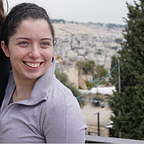A Pair of 35 lb Dumbbells Almost Won the Cabot Midterm Election
The Harvard Undergraduate Council midterm election turnout was even lower than the College’s 6% acceptance rate.
The 2018 UC presidential election saw record breaking student engagement. According to the Crimson, voter turnout in November marked a 35 percent increase compared to the year prior. However, this enthusiasm appears to be limited. Interest in February midterm elections, which only occur in houses with vacant positions, remained incredibly low.
As we have written before, Harvard’s Undergraduate Council has a tangible influence on campus. The purpose of the Council is to represent the interests of the greater student body. The council budget was expanded to a total of $650,000 in October, which means that their potential for impact is greater than it has ever been before.
Only 9 People Declared Their Candidacy
13 spots were up for grabs, but it appeared that very few students wanted to fill them. 5 houses had 2 open seats; Adams, Cabot, Leverett, Pforzheimer, and Winthrop. Currier, Eliot, and Lowell each had 1.
Lowell House was the only case where the number of candidates was greater than the number of positions available.
Sophomore Samyra Miller beat out junior Andrew Morley with more than double the amount of 1st place votes. All of the other elections were uncontested, theoretically. More on that later.
Thousands of students were eligible to vote, but only 155 did.
Did Uncontested Elections Lead to Low Voter Turnout?
In past years we have compared the voter turnout of each house with the number of candidates who ran. However, the varied amount of open midterm positions across houses means that this measure is akin to comparing apples to oranges.
Both Leverett and Lowell had 2 candidates running for election. Lev had 2 open spots while Lowell had only 1. Lev’s voter turnout of 2.6% was the lowest of all of the houses, while Lowell’s was the highest at 6.6%. It makes intuitive sense that the only contested election would have the highest voter turnout, independent of the exact number of positions available.
Cabot House Had Not a Single Candidate.
Every single one of the votes placed was a write in. Notable nominees include Danearys Targaryen from Game of Thrones and Tom Brady.
The most dominant write in vote was for “35lb Dumbbells.”
An additional vote for “The other 35lb dumbbell” suggests that this was perhaps a concerted effort. Although Cabot is an extreme example, these results appear to be indicative of a larger overall trend.
Write Ins are In
6 out of the 13 newly elected representatives did not ever volunteer to run. Rather, these candidates were written in by their peers. It is unclear whether any of the elected students intend to forfeit their positions.
Why Vote?
There are systems in place to mitigate student concerns, but they remain grossly underutilized. If students truly want their own interests to be communicated to the administration, then casting a ballot is far overdue.
This is a project of the Harvard College Open Data Project (HODP), a student-faculty group that aims to use public Harvard data to increase transparency and analyze problems on campus.
Thanks to everyone at HODP who contributed to this article, especially Stephen Moon. Many thanks to the Election Commission for sharing their data with us.
